Christopher Miller, MBA | Specialized Wealth Management
Originally Appeared in Apartment Management Magazine
For over 20 years, I’ve helped investors lessen their landlord responsibilities through the use of 1031 Exchanges and Partial Interest Properties. Many investors have asked me “Which of my properties should I sell first?” I’ll answer that with a question: “Which are the lowest performing?” Some investors may have owned several properties over many decades but can’t answer that question. This month, we’ll review how to create a cash flow statement on your property, calculate your Return on Equity, and estimate your Property Value.
The Fun Part – Add Up Your Income
First, we’ll need to add up your gross receipts from the property. This will include monthly rent payments and other income from laundry or parking. It is important to note that Tenant Deposits do not count as income since you will need to pay that back at some point or use it for repairs. Write down your annual monetary collections as A. I’ll use $100,000 as an example.
Less Your Expenses: Property Taxes, Insurance, Maintenance
Next, let’s calculate your expenses. Total up all the bills you pay for the property on an annual basis. Property taxes, insurance, repairs, maintenance and utilities will be the major categories here.
Remember to include Property Management. Even if you manage the property yourself, you’ll need to take into account the value of your time. This is important for two reasons: 1. If you sell your property, the buyer will use this as an expense against the income while he’s calculating the value, and 2. Sometimes we will think a property is “doing great” until we account for our time. A $30,000 annual profit may not be so good if it is taking 30 hours of your time every week. A good estimate for Property Management Expense is 7% of Gross Income.
Now that you have your Total Expenses, Write this number down as B. My estimated amount will be $37,500.
Determine Your Net Operating Income And Use A Cap Rate To Estimate Your Value
Take your A Total Revenue and subtract B Total Expenses, and you’ll have your Net Operating Income. For our example property, that is A. $100,000 – B. $37,500 = $62,500. Write this number down as C. Next, we will estimate your value: First, we’ll need to determine what capitalization rate, or CAP rate, is applicable to your building. This number will vary based on market conditions, and I’ve written entire articles on estimating CAP Rates in the past. Call my office for help determining the one that may best apply to your property. For this example, we’ll use 4%. For calculation purposes, we’ll use the decimal value of 0.04. Write that number down as D.
Your estimated property value is C. Net Operating Income ($62,500) divided by D. CAP Rate (0.04%). This indicates a value estimation of $1,562,500. We’ll mark that down as E.
Your Loan Details To Calculate Your Cash Flow And Return On Equity Figures
We’ll need two details from your loan: the F. Outstanding Balance and G. your Annual Debt Service (Monthly Mortgage) Payments. For our estimation we’ll use a 30-year $800,000 loan from September of 2017 at a 4.5% rate. This will give us annual debt service payments of $48,641 (H) and a remaining balance of $713,000 (J).
The Equity you have in the property is your Estimated Value, E $1,562,000 minus your remaining loan balance J. $713,000 = $849,000 (K.)
Your Cash Flow is C. Net Operating Income ($62,500) minus H. Debt Service Payments $48,641 = $13,859 annually. (L). Your Return on Equity is L. Cash Flow divided by K. Equity = 1.6% annually. It looks like we may have found this investor’s poorest-performing property!
Now You Can Evaluate Your Portfolio
With this information, you can now evaluate the performance of your own portfolio. Which properties are your “stars?” Which are the “dogs” that may be well suited to sell for exchange into investments that can provide better income or growth opportunities? I have a one-page flyer that summarizes these calculations into an easy worksheet. If you would like a copy to help evaluate your own portfolio, call my office toll-free at (877) 313-1868.

